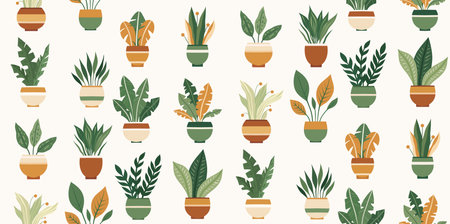1. Understanding Essential Nutrients for Aquatic Plants
For aquatic plants to thrive, they require a balanced supply of essential nutrients. These nutrients are divided into macronutrients and micronutrients, both of which play a crucial role in plant health and growth.
Macronutrients: The Building Blocks of Growth
Macronutrients are needed in large amounts and directly influence the overall development of aquatic plants. The three primary macronutrients are:
| Nutrient | Function | Deficiency Symptoms |
|---|---|---|
| Nitrogen (N) | Essential for leaf and stem growth, contributes to chlorophyll production | Yellowing leaves, slow growth, weak stems |
| Phosphorus (P) | Aids in root development and energy transfer | Poor root growth, dark or purplish leaves |
| Potassium (K) | Strengthens plant resistance to disease, regulates water uptake | Browning or yellowing leaf edges, weak stems |
Micronutrients: Supporting Plant Health
Aquatic plants also require smaller amounts of micronutrients, which support various physiological functions:
| Nutrient | Function | Deficiency Symptoms |
|---|---|---|
| Iron (Fe) | Aids in chlorophyll formation and photosynthesis | Pale or yellow new leaves, slow growth |
| Magnesium (Mg) | Main component of chlorophyll, supports enzyme function | Yellowing between leaf veins (chlorosis), poor plant development |
| Zinc (Zn) | Regulates plant hormones and enzyme activity | Dwarfed or distorted new leaves, slow growth |
The Importance of a Balanced Nutrient Supply
An imbalance in any of these nutrients can lead to poor plant health, stunted growth, or even algae overgrowth. Regularly testing water parameters and using high-quality fertilizers designed for aquatic plants can help maintain optimal nutrient levels.
Troubleshooting Nutrient Deficiencies
If you notice signs of deficiency in your aquatic plants, consider adjusting fertilization routines or supplementing specific nutrients. Proper lighting and CO2 levels also contribute to efficient nutrient absorption.
Key Takeaways:
- Aquatic plants need both macronutrients and micronutrients to grow properly.
- Nitrogen, phosphorus, and potassium are essential for overall plant health.
- Miconutrients like iron and magnesium prevent deficiencies that impact color and structure.
- A well-balanced nutrient supply ensures healthy aquatic plant growth.
The next step is identifying specific nutrient deficiencies by observing plant symptoms and adjusting care accordingly.
2. Common Signs of Nutrient Deficiencies
Keeping aquatic plants healthy requires a good balance of essential nutrients. When certain nutrients are lacking, plants start showing visual symptoms that can help identify the specific deficiency. Recognizing these signs early can prevent further damage and ensure your plants thrive.
Identifying Nutrient Deficiencies by Symptoms
Aquatic plants exhibit different signs depending on which nutrient they are missing. Below is a guide to common symptoms and the nutrients they indicate:
| Symptom | Possible Nutrient Deficiency |
|---|---|
| Yellowing leaves (older leaves affected first) | Nitrogen (N) deficiency |
| Stunted growth and pale new leaves | Iron (Fe) deficiency |
| Brittle or deformed leaves | Calcium (Ca) deficiency |
| Purple or reddish leaf discoloration | Phosphorus (P) deficiency |
| Deteriorating leaf edges or holes in leaves | Potassium (K) deficiency |
| Pale, translucent leaves with poor growth | Magnesium (Mg) deficiency |
The Importance of Early Detection
Catching these deficiencies early helps prevent permanent damage to your aquatic plants. If you notice any of the above symptoms, adjusting your fertilization routine or checking water parameters can quickly restore plant health.

3. Diagnosing Nutrient Deficiencies
Ensuring your aquatic plants receive the proper nutrients is crucial for maintaining a healthy, vibrant tank. If your plants are showing signs of distress, such as yellowing leaves or stunted growth, they may be lacking essential nutrients. Proper diagnosis involves assessing plant symptoms, testing water parameters, and considering overall tank conditions.
Common Signs of Nutrient Deficiencies
Different nutrient deficiencies produce distinct symptoms in aquatic plants. By recognizing these signs, you can identify which nutrients are lacking and adjust your fertilization routine accordingly.
| Nutrient | Deficiency Symptoms |
|---|---|
| Nitrogen (N) | Yellowing of older leaves, slow growth, weak stems |
| Phosphorus (P) | Dark green or purplish leaves, slow growth |
| Potassium (K) | Pinhole-sized holes in leaves, yellowing edges |
| Iron (Fe) | Pale new leaves, yellowing between veins (chlorosis) |
| Magnesium (Mg) | Yellowing between veins on older leaves |
| Calcium (Ca) | Twisted or deformed new growth, weak stems |
Testing Water Parameters
Aquatic plant health is directly tied to water chemistry. Testing your water regularly helps determine if essential nutrients are missing. Consider checking:
- Nitrate (NO3-): Ensures adequate nitrogen levels for plant growth.
- Phosphate (PO4-): Supports root development and energy transfer.
- Potasium (K): Prevents leaf decay and maintains cell function.
- Iron (Fe): Essential for chlorophyll production and vibrant coloration.
- KH & GH: Important for calcium and magnesium availability.
A quality liquid test kit or digital meter can provide accurate readings. If certain nutrients are deficient based on test results, consider adjusting your dosing regimen.
The Role of Tank Conditions
Nutrient deficiencies aren’t always caused by a lack of fertilization—other factors can affect nutrient uptake:
Lack of CO2:
If CO2 levels are too low, plants struggle to absorb nutrients effectively. Consider adding a CO2 injection system or increasing surface agitation to promote gas exchange.
Poor Lighting:
If lighting is too dim or inconsistent, plants won’t photosynthesize efficiently, reducing their ability to utilize available nutrients. Ensure your lighting matches the needs of your plant species.
Nutrient Imbalance:
An excess of one nutrient can block the absorption of another. For example, too much phosphate can inhibit iron uptake. Maintaining balanced nutrient levels is key to preventing deficiencies.
Troubleshooting Nutrient Deficiencies Effectively
If your plants show signs of nutrient deficiencies despite regular fertilization, follow these steps:
- Observe Plant Symptoms: Identify visual clues like discoloration, leaf damage, or slow growth.
- Test Water Parameters: Use test kits to check nitrate, phosphate, potassium, and trace elements.
- Ajust Fertilization:Add targeted supplements based on deficiency symptoms and test results.
- Evalue Tank Conditions:: Ensure proper CO2 levels, lighting intensity, and flow distribution.
- Mantain Regular Monitoring:: Keep track of plant response and adjust dosing as needed.
A balanced approach that combines symptom analysis, water testing, and environmental adjustments will help you diagnose and correct nutrient deficiencies effectively. By staying attentive to your plants’ needs, you can create a thriving aquatic ecosystem full of lush greenery.
4. Effective Treatment Solutions
Once youve identified nutrient deficiencies in your aquatic plants, the next step is to correct them effectively. There are several methods to restore proper nutrient levels, including liquid fertilizers, root tabs, and adjusting water parameters to optimize nutrient absorption.
Using Liquid Fertilizers
Liquid fertilizers provide a quick and efficient way to deliver essential nutrients directly to the water column. They are especially useful for plants that absorb nutrients through their leaves rather than their roots.
How to Use Liquid Fertilizers:
- Select the Right Fertilizer: Choose a comprehensive fertilizer that includes macronutrients (nitrogen, phosphorus, potassium) and micronutrients (iron, manganese, zinc, etc.).
- Follow Dosage Instructions: Overdosing can lead to algae problems, so always follow the manufacturers recommendations.
- Apply Regularly: Most liquid fertilizers should be added weekly or after water changes for consistent nutrient availability.
Adding Root Tabs
Root tabs are solid nutrient supplements placed in the substrate near plant roots. They are ideal for heavy root feeders like Amazon swords and crypts.
How to Use Root Tabs:
- Insert Near Plant Roots: Push the root tab deep into the substrate near the base of the plant.
- Replace Every Few Months: Root tabs slowly release nutrients over time and should be replaced every 1-3 months.
- Avoid Excessive Use: Using too many at once can lead to nutrient imbalances or unwanted algae growth.
Adjusting Water Parameters
The right water parameters help ensure plants can absorb nutrients effectively. Factors such as pH, hardness, and CO2 levels play a critical role in nutrient uptake.
Key Water Parameter Adjustments:
| Nutrient Deficiency | Poor Water Condition | Recommended Adjustment |
|---|---|---|
| Iron (Fe) | Poor absorption due to high pH (>7.5) | Lower pH slightly using driftwood or CO2 |
| Nitrogen (N) | Low nitrate levels (<10 ppm) | Add nitrogen-based fertilizers or increase fish waste |
| Calcium (Ca) | Soft water with low GH | Add crushed coral or calcium-rich additives |
| Potasium (K) | No direct test available, but yellowing leaf edges indicate deficiency | Dose potassium supplements regularly |
The Importance of Consistency
Nutrient deficiencies often develop over time due to inconsistent fertilization or improper water conditions. Regular testing, scheduled fertilization, and maintaining stable water parameters will help prevent future issues and promote healthy plant growth.
5. Preventative Measures for Long-Term Plant Health
Maintaining a balanced aquatic environment is essential for preventing nutrient deficiencies in aquatic plants. By following best practices such as regular water changes, proper lighting, and a well-planned fertilization schedule, you can ensure long-term plant health and vibrant growth.
Regular Water Changes
Water changes help maintain water quality by removing excess waste, replenishing essential nutrients, and preventing imbalances that can lead to deficiencies. A good rule of thumb is to replace 20-30% of the tank water weekly.
Benefits of Regular Water Changes
- Removes accumulated toxins and waste
- Replenishes trace elements needed for plant growth
- Prevents algae overgrowth by maintaining nutrient balance
Proper Lighting
Aquatic plants require the right amount and type of light to photosynthesize effectively. Too little light can stunt growth, while too much light can lead to algae problems. Choosing the correct lighting setup ensures plants receive adequate energy for nutrient absorption.
Lighting Guidelines Based on Plant Type
| Plant Type | Recommended Light Intensity | Duration per Day |
|---|---|---|
| Low-light plants (e.g., Anubias, Java Fern) | 0.25-0.5 watts per liter | 6-8 hours |
| Medium-light plants (e.g., Cryptocoryne, Amazon Sword) | 0.5-1 watt per liter | 8-10 hours |
| High-light plants (e.g., Glossostigma, Rotala) | 1-2 watts per liter | 10-12 hours |
A Well-Planned Fertilization Schedule
Aquatic plants require macronutrients (nitrogen, phosphorus, potassium) and micronutrients (iron, magnesium, calcium) to thrive. A structured fertilization routine ensures they receive the right balance of nutrients.
Nutrient Requirements and Common Sources
| Nutrient | Main Function | Common Sources |
|---|---|---|
| Nitrogen (N) | Leaf and stem growth | Nitrate-based fertilizers, fish waste |
| Phosphorus (P) | Root development and flowering | Phosphate fertilizers, organic matter |
| Potassium (K) | Disease resistance and strong stems | Potasium sulfate, aquarium plant fertilizers |
| Iron (Fe) | Lush green coloration | Chelated iron supplements, root tabs |
| Magnesium (Mg) | Aids in chlorophyll production | Epsom salt, trace mineral supplements |
| Calcium (Ca) | Cell wall strength and stability | Crumpled coral, calcium carbonate additives |
Troubleshooting Nutrient Imbalances Early
The key to preventing major issues is early detection. Regularly inspect plant leaves for signs of deficiencies such as yellowing, browning edges, or slow growth. If you notice any symptoms, adjust your fertilization or lighting accordingly before problems escalate.
Nutrient Deficiency Warning Signs Chart
| Nutrient Deficiency | Main Symptoms |
|---|---|
| Nitrogen (N) | Pale yellow leaves, slow growth |
| Phosphorus (P) | Purple or dark spots on older leaves |
| Potassium (K) | Browning leaf edges, weak stems |
| Iron (Fe) | Pale new growth with green veins (chlorosis) |
| Manganese (Mn) | Dotted yellow spots between leaf veins |
| Zinc (Zn) | Dwarf leaves with distorted shapes |
A proactive approach to maintaining your aquarium’s ecosystem will help prevent nutrient deficiencies before they become problematic. By implementing these preventative measures consistently, your aquatic plants will flourish in a stable and healthy environment.


